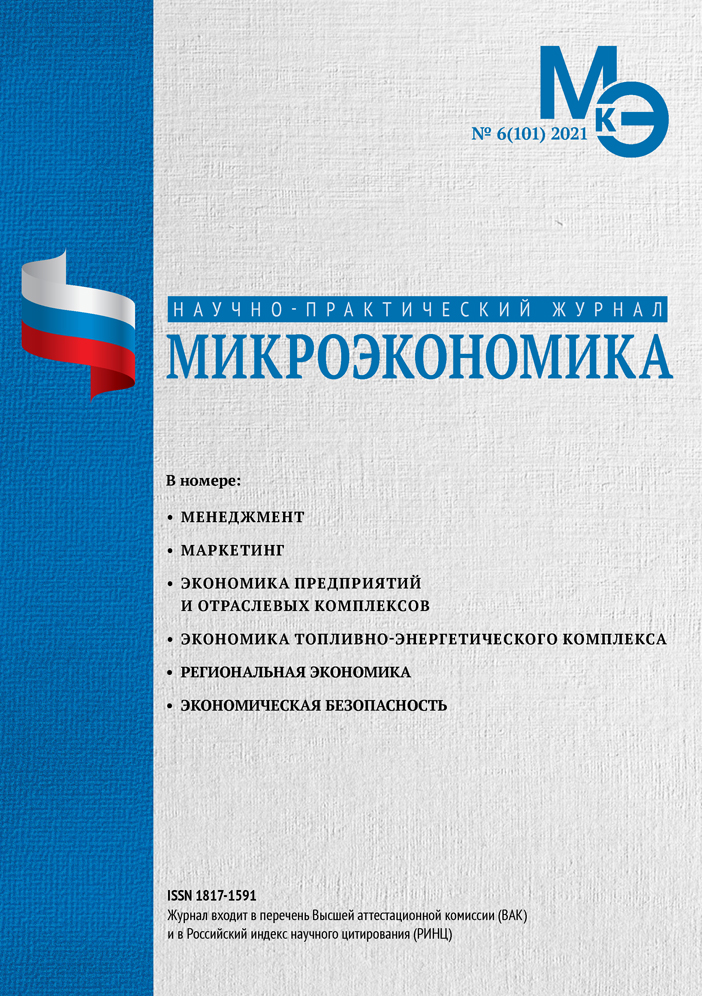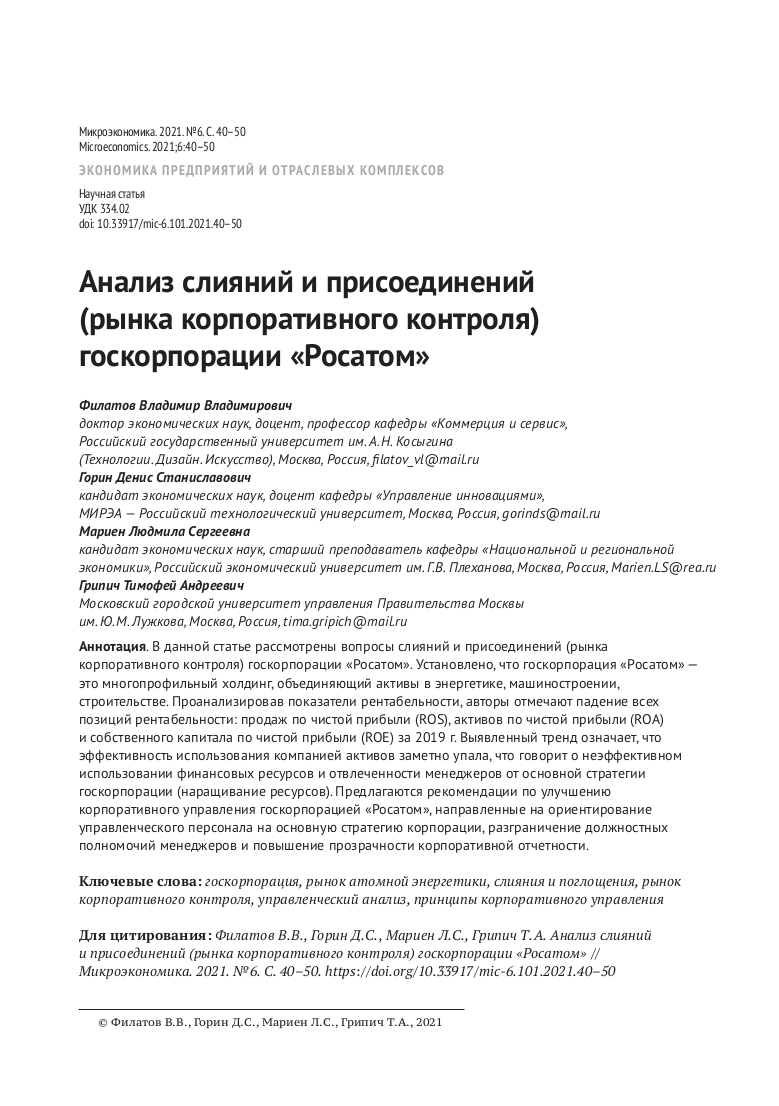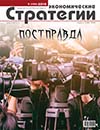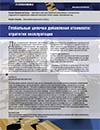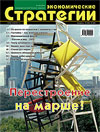Analysis of mergers and acquisitions (corporate control market) of Rosatom State Corporation
DOI: 10.33917/mic-6.101.2021.40-50
This article discusses the issues of mergers and acquisitions (corporate control market) of the Rosatom State Corporation. It has been established that the Rosatom State Corporation is a multidisciplinary holding company combining assets in the energy, mechanical engineering, and construction. After analyzing the profitability indicators, the authors note a drop in all profitability positions: sales by net profit (ROS), assets by net profit (ROA) and equity by net profit (ROE) for 2019. The revealed trend means that the efficiency of the company’s use of assets has dropped significantly, which indicates the ineffective use of financial resources and the distraction of managers from the main strategy of the state corporation (increasing resources). Recommendations for improving the corporate governance of the state corporation «Rosatom» are proposed, aimed at orienting management personnel to the main strategy of the corporation, delineating the official powers of managers and increasing the transparency of corporate reporting.


